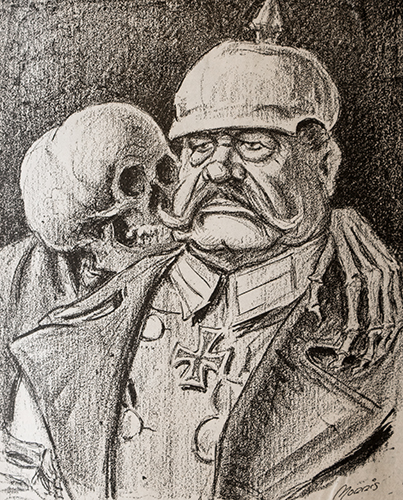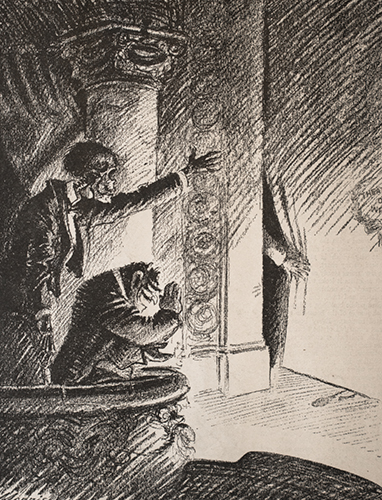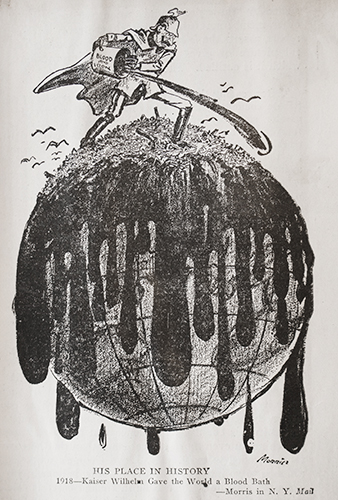 One hundred years ago today, on April 6, 1917, the United States officially entered the First World War. American public opinion had been, and would remain, divided over the conflict. Among those who played an important part in shaping how Americans viewed the war were political cartoonists, one of whose papers are now in UNM's Center for Southwest Research & Special Collections.
One hundred years ago today, on April 6, 1917, the United States officially entered the First World War. American public opinion had been, and would remain, divided over the conflict. Among those who played an important part in shaping how Americans viewed the war were political cartoonists, one of whose papers are now in UNM's Center for Southwest Research & Special Collections.
Born in Salt Lake City in 1874, William Charles Morris was the son and grandson of mural painters and illustrators. It was not until the age of 28, however, that he taught himself how to draw. For nine years, Morris worked was a cartoonist for the Spokane Spokesman-Review in Washington. In 1913, tired of having his work censored by the paper’s managers, he moved to New York City and did freelance work for Life, Judge, Outlook, and Harper's Weekly, before being hired by the George Matthew Adams Service, a newspaper syndicate with publications all across the country. Morris’s work was also widely reproduced in American and European magazines, including the popular satirical journal Puck. He even ventured into the new art of animated cartoons.
"If my drawings can help clarify national and world events," Morris remarked, "and help people form their own opinions, I feel that I have accomplished my purpose as a cartoonist." Although he drew many humorous cartoons, "the grim, serious cartoon," according to one newspaper article, "is the one he likes best to make."
The First World War provided ample material for such images. Cartoonists and illustrators, in fact, produced thousands of images, some of it propaganda, related to nearly every aspect of the war, from the brutal treatment of civilians to political and economic issues. While other Americans fought on the seas, in the skies, and in the trenches, Morris armed himself with a pen, using comedy to call attention to one of history's greatest tragedies.
Morris died in Nyack, New York, in 1948, after a distinguished career in cartooning. Shown here are a few examples of his work from World War I. Several scrapbooks of Morris cartoons, covering topics from Prohibition to presidential elections, are available in the W. C. Morris Papers in the Center for Southwest Research & Special Collections.






0 Comments.